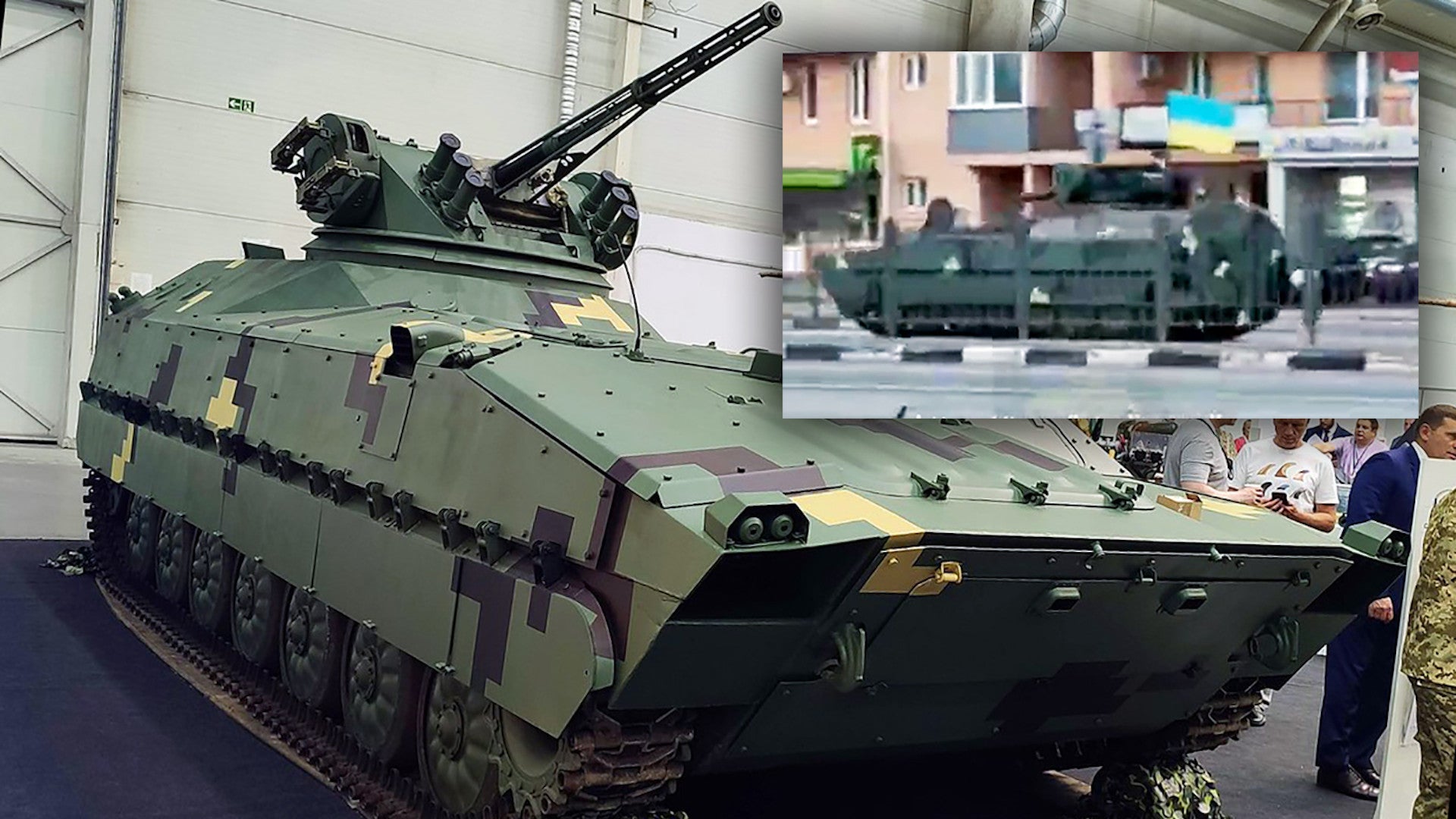A prototype Ukrainian tracked infantry fighting vehicle, which uses the same chassis as the 122mm 2S1 Gvozdika self-propelled howitzer and appears to be the only example of its kind ever built, looks to have joined the country’s fight against invading Russian forces. A video emerged on social media earlier today, which was reportedly taken recently in the city of Kharkiv, that clearly shows the vehicle, known as Kevlar-E, driving down a street flying a large Ukrainian flag. The capture of Kharkiv, also written Kharkov, which lies just around 20 miles south of the Russian border, has been a major objective for the Kremlin’s forces, as you can read all about in The War Zone‘s continuing rolling coverage of this conflict.
The UkrInnMash Corporation first unveiled the Kevlar-E in 2017 and announced it had built a prototype in 2020. The following year, what appears to have been the same prototype was put on display at an arms expo in the Ukrainian capital Kyiv. There are no indications one way or another that more than one example of this vehicle has ever been built.
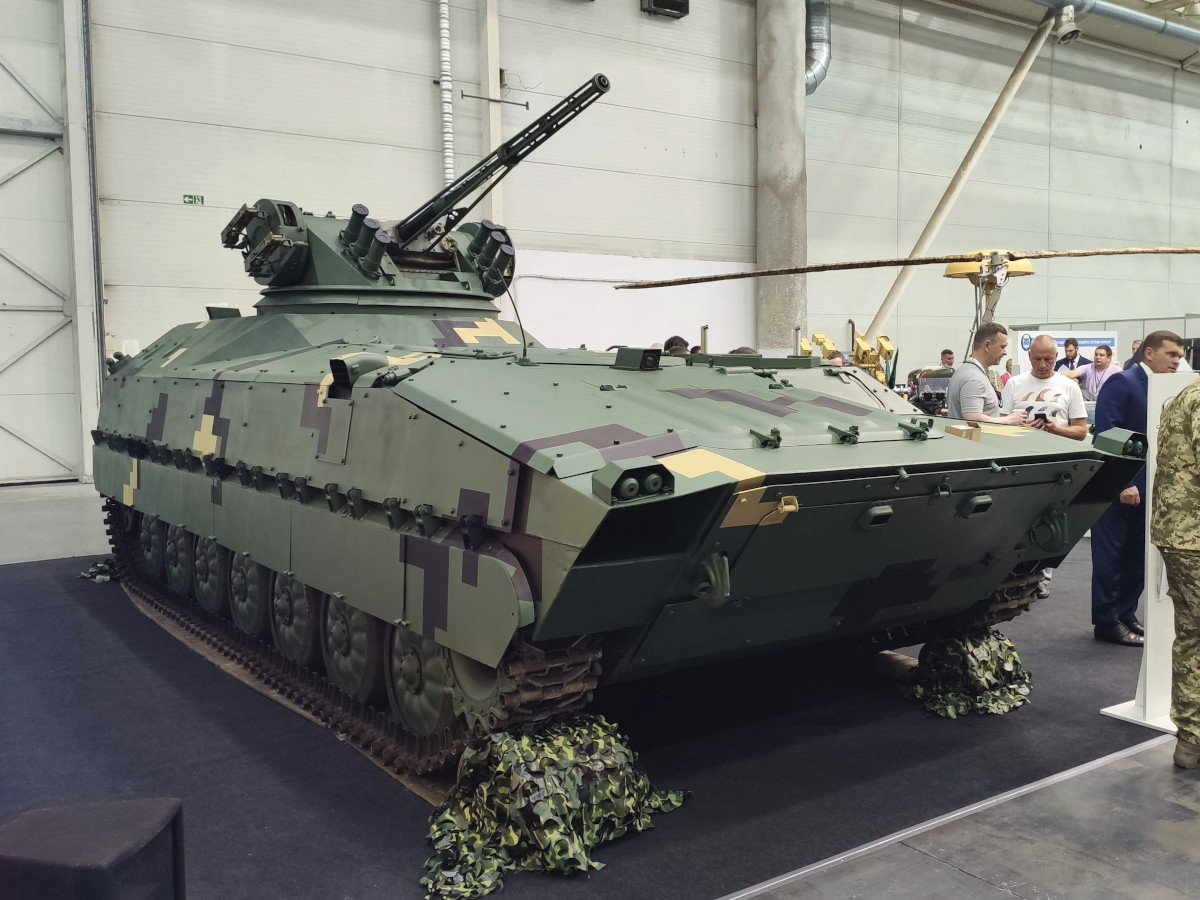
The Kevlar-E uses a derivative of the Soviet-era MT-LBu chassis, itself a larger version of the MT-LB chassis. The MT-LB and MT-LBu were designed as multi-purpose armored personnel and weapons carriers, and also served as the basis for a host of more specialized vehicles. The best known of the designs utilizing the elongated MT-LBu chassis is the 2S1 self-propelled howitzer.
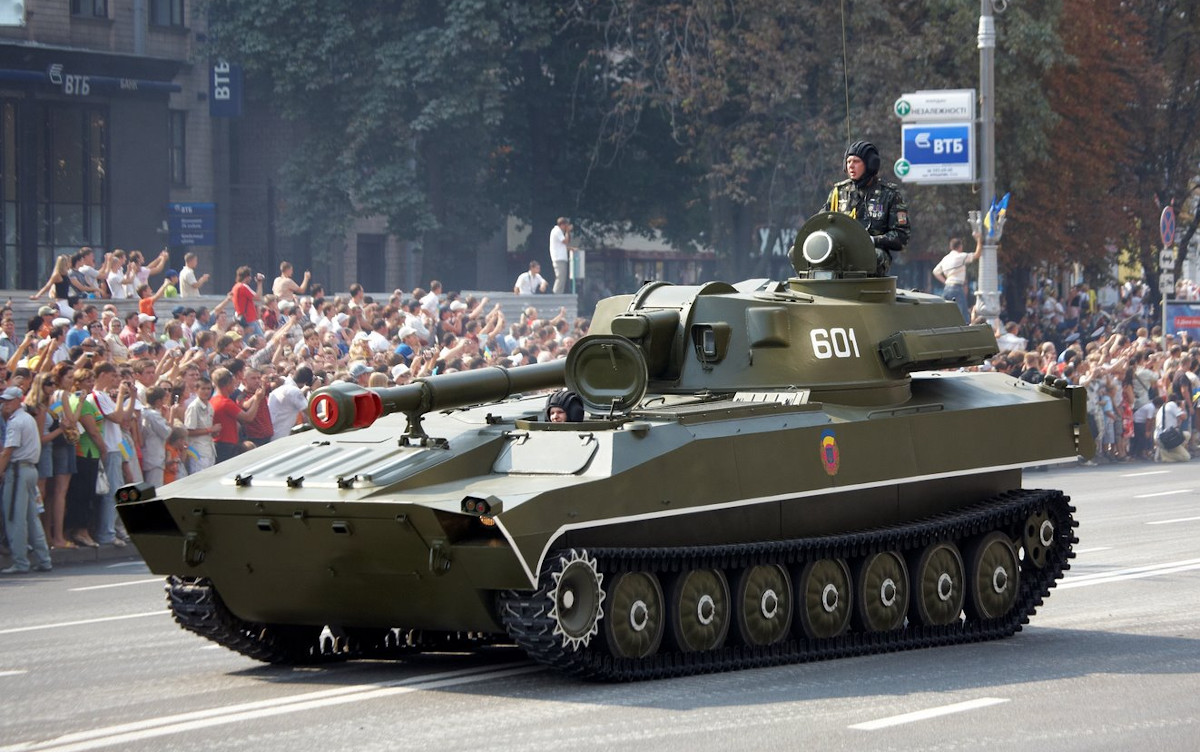

As of 2018, UkrInnMash said that the nearly 18.5-ton (16,700 kilograms) Kevlar-E would be able to reach speeds of almost 43.5 miles per hour (70 kilometers per hour) on improved roads and close to 28 miles per hour (45 kilometers per hour) when operating off-road. The vehicle, which was to be offered with a variety of engines, including a U.S.-made Cummins diesel, was designed to be amphibious and be able to travel just under 373 miles (600 kilometers) on a single tank of gas.
The Kevlar-E, which was designed to be operated by a crew of three and be able to carry six fully armed troops in the rear, was also to be armed with a Shturm turret on top of the rear of the hull. The Shturm features a 30mm automatic cannon and a 7.62x54mm co-axial machine gun. This turret has a modular design that allows additional weapon systems, such as launchers for anti-tank missiles, to be added to either side.
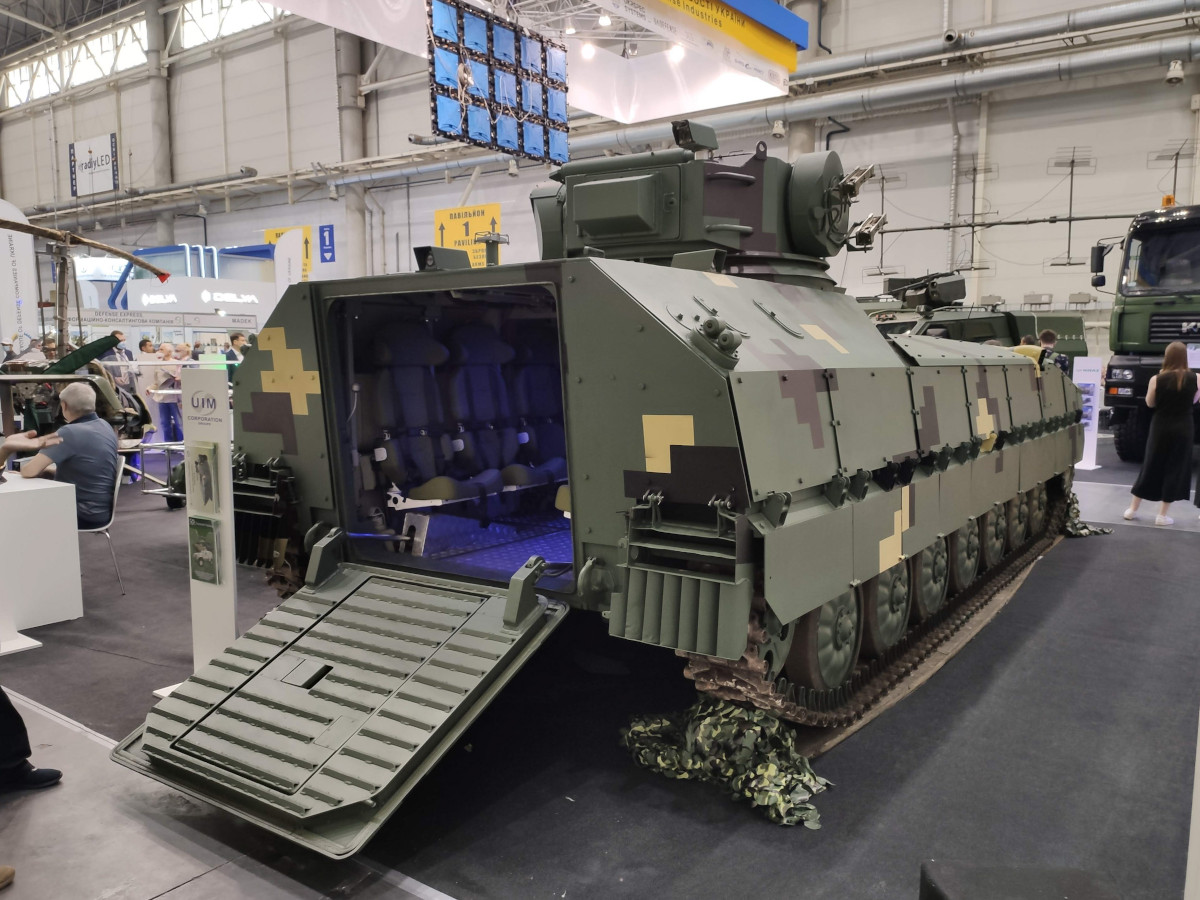
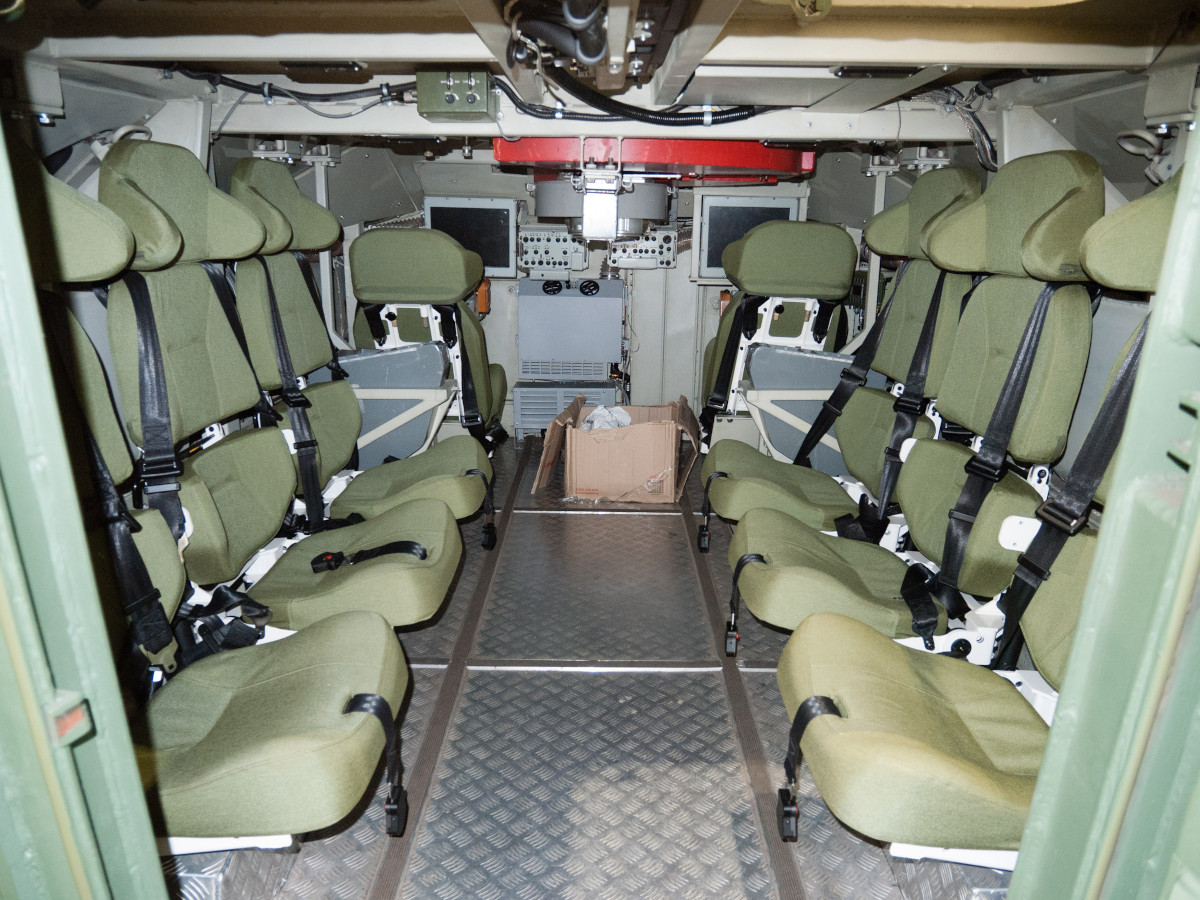
In the past, UkrInnMash has pitched Kevlar-E heavily as a replacement for the Ukrainian military’s aging Soviet-era BMP-1 and BMP-2 infantry fighting vehicles. The use of the same chassis as the MT-LBu, the main production line for which was first established in Soviet Ukraine in the late 1950s, was a key selling point for the new design. BMP-1s and BMP-2s were, and in the latter case still are, produced in Russia. In addition, the company said Kevlar-E would be the basis for an entire family of vehicles, including dedicated anti-tank, self-propelled rocket artillery, command and control, recovery, and armored ambulance variants. However, none of those versions appear to have ever reached even the prototype stage.
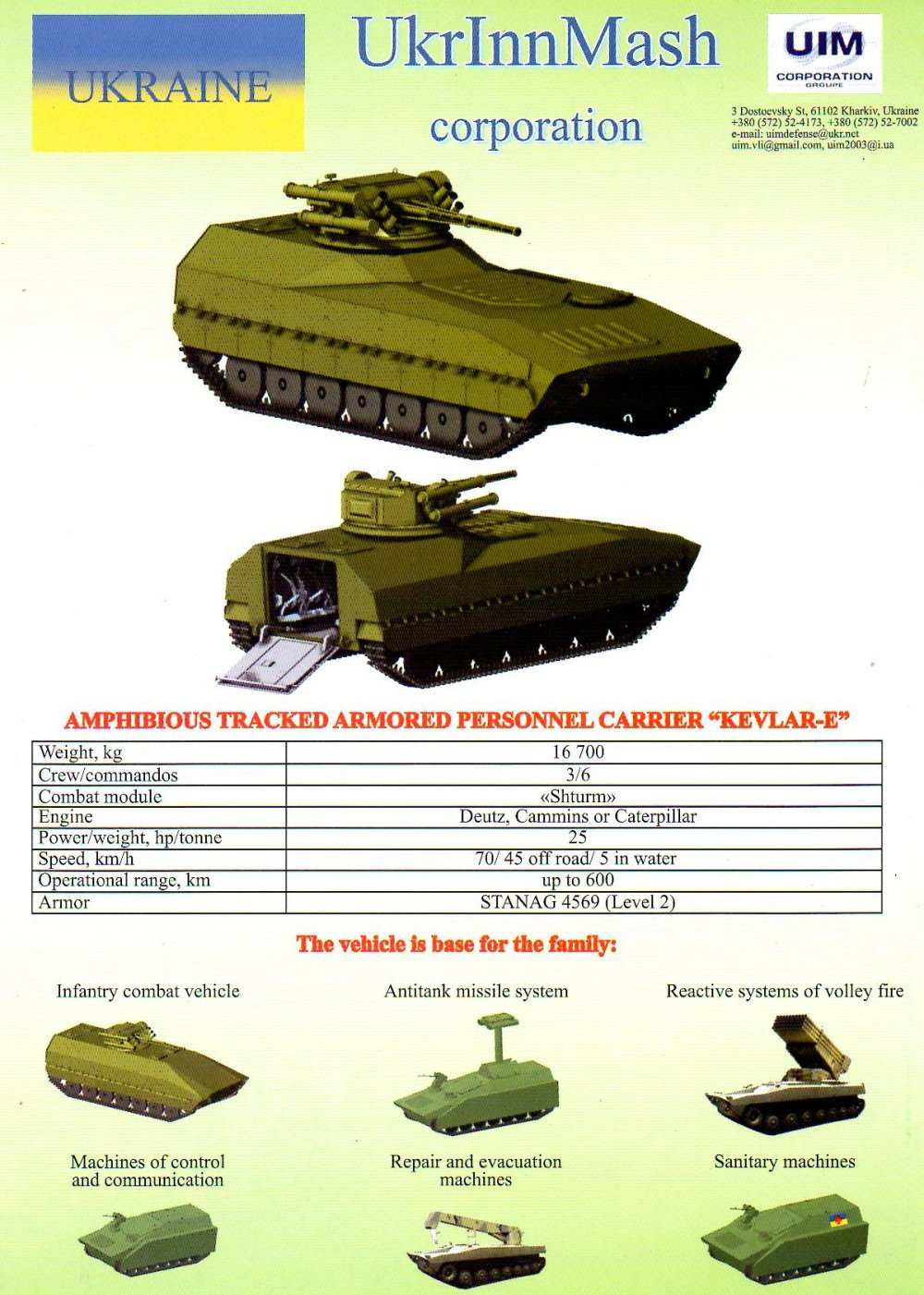

“Regarding the carrying chassis, the choice in favor of the MT-LB platform was driven by economy reasons, because a new platform would take a substantial amount of money to develop from scratch,” Andrii Hryshchenko, a representative of UkrInnMash and a Ukrainian Lieutenant-General, told Defense Express last year. “Experience proves that it’s a fully acceptable option to adopt an already available platform.”

Exactly how representative the prototype Kevlar-E was or is of a notional production-standard example and what its exact capabilities might be in its current form are unclear. The video we’ve seen shows that it is clearly drivable if nothing else.
It’s interesting to note that Russia appears to have deployed some of its small, almost prototype fleet of BMPT-72 Terminator armored fighting vehicles to Ukraine, as well. Reports indicate that only nine BMPT-72s are in service.
Even if the Kevlar-E prototype’s capabilities are more limited compared to what UkrInnMash has expected from actual production models, the Ukrainian military is no doubt happy to have any and all armored vehicles it can lay its hands on to help defend the country against advancing Russian forces. If the vehicle’s turret is functional, it offers just that much more extra mobile firepower along with added capacity to move small numbers of troops around under armor, as well as a way to help retrieve casualties under fire.
This vehicle was built at a factory in Kharkiv, which would have made it an even easier decision to roll it out. The city continues to be a major target for Russian forces in a country where even the average citizenry is increasingly mobilized, armed with whatever weapons are at hand, including homemade Molotov cocktails.
It’s absolutely all hands on deck in Ukraine’s fight against Russia, which apparently includes experimental armored vehicles.
Contact the author: joe@thedrive.com
